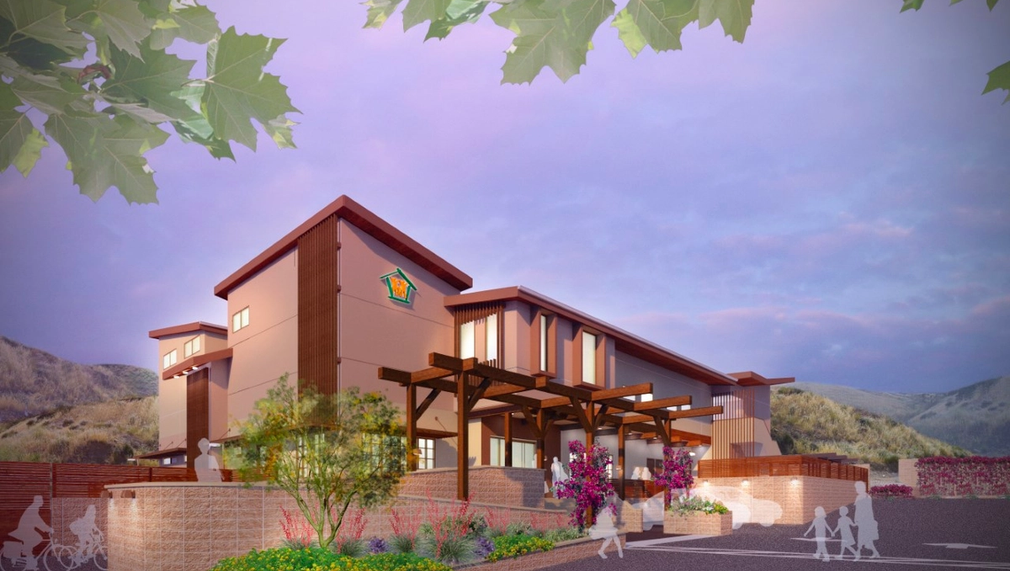Bridge to Home SCV - Homelessness & Housing Services
Bridge to Home delivers year-round interim housing and homelessness services at a site that is currently beyond repair. In order to meet the needs of the community, we are constructing a brand-new facility which will expand our programs and services, thereby increasing the rate of housing for our clients. The facility will have 60 shelter beds for individuals plus 8 family units for up to 32 people, a Learning Center for education and employment development, Housing Navigation, and a full scope of services that make the bridge to home possible.

What is the primary issue area that your application will impact?
Housing and Homelessness
In which areas of Los Angeles will you be directly working?
San Fernando Valley
Antelope Valley
Other:: Santa Clarita Valley
In what stage of innovation is this project, program, or initiative?
Expand existing project, program, or initiative
What is your understanding of the issue that you are seeking to address?
The severity of homelessness is evident. Data collected in the 2020 Greater Los Angeles Homeless Count show that homelessness increased by 12.7% with predictions of homelessness continuing to rise. In Santa Clarita, our most vulnerable neighbors face staggering factors that, without support services, increase the likelihood of more people experiencing homelessness. Some of the factors that increase risk for people who are unhoused or vulnerable to losing their home include the effects of the COVID19 pandemic, inflation, rising interest rates, the removal of eviction protections, increased cost of living disproportionate to income, cost and access to healthcare, and the overwhelming need for support for our most vulnerable neighbors. Bridge to Home is the only year-round shelter facility in the area. With an estimated 600+ households known to be experiencing homelessness in Santa Clarita, the community relies on Bridge to Home to deliver homelessness and housing services.
Describe the project, program, or initiative this grant will support to address the issue.
Funding will support building and operating a new homelessness services facility. The most significant outcome will be an increase in the rate of housing for our clients. The facility will have 60 shelter beds for individuals plus Santa Clarita’s first and only interim housing for families, with 8 units for a total of 32 individuals. The site will include a kitchen and dining room, classrooms, a technology center, training rooms, medical offices, outdoor meeting spaces - all designed to help clients with their employment, education, and housing goals. Clients will be empowered to address their specific barriers to housing such as under-employment, lack of education, trauma, abuse and domestic violence, addiction, legal issues. Programs include compassionate care that will build confidence during their journey towards housing. Bridge to Home serves as a nexus for the community’s collective efforts to help its neighbors in need. We are the community’s Coordinated Entry System (CES) satellite office and the primary Family Solutions Services provider for the area. We interface with virtually every system and agency that encounters people experiencing homelessness, including the hospital, school districts, libraries, county Departments of Health Services and Mental Health, and a broad spectrum of service agencies, including the Child and Family Center, Family Promise, Single Mother’s Outreach and Santa Clarita’s dozens of generous and active faith communities and civic groups.
Describe how Los Angeles County will be different if your work is successful.
Accessible, client-centered, permanent housing solutions have a high return on investment individually and communally. Once built, programs and services will be located at the new facility, as will many co-located services to be delivered in partnership with a variety of agencies. This will alleviate the stress on programs and services outside of Santa Clarita. Additionally, the programs and services we provide are geared to retain a high rate of clients remaining housed versus returning to the streets. Because we incorporate education, employment, and empowerment in every aspect of service delivery, our clients express motivation to stay housed and stay employed. This affords a meaningful long-term cost savings on the County’s social service systems. As we continue to implement housing services at the new facility, we anticipate future collaborations with programs and services across Los Angeles that impact both our immediate community and the greater LA region.
What evidence do you have that this project, program, or initiative is or will be successful, and how will you define and measure success?
Bridge to Home measures outcomes by tracking: number of clients who present for services; number of shelter beds filled; meals served; number of clients working with case managers and housing navigators; number of clients who secure employment; number of clients enrolled in education; number placed in permanent supportive housing. Data is entered in LAHSA's Clarity system, DHS's CHAMPs system, and on-site client files. We use the evidence-based Housing First model for finding housing as quickly as possible. According to the National Alliance of Ending Homelessness, this model is proven to reduce a return to homelessness. Our outcomes for permanently housing clients demonstrate the effectiveness of providing homeless services in one accessible space where we become an empowering support system for our clients. In fiscal year 20/21, we served 1,000 individuals and housed 82 individuals and 42 families. As we continue to expand services, the trajectory of client success improves.
Approximately how many people will be impacted by this project, program, or initiative?
Direct Impact: 1,000
Indirect Impact: 30,000